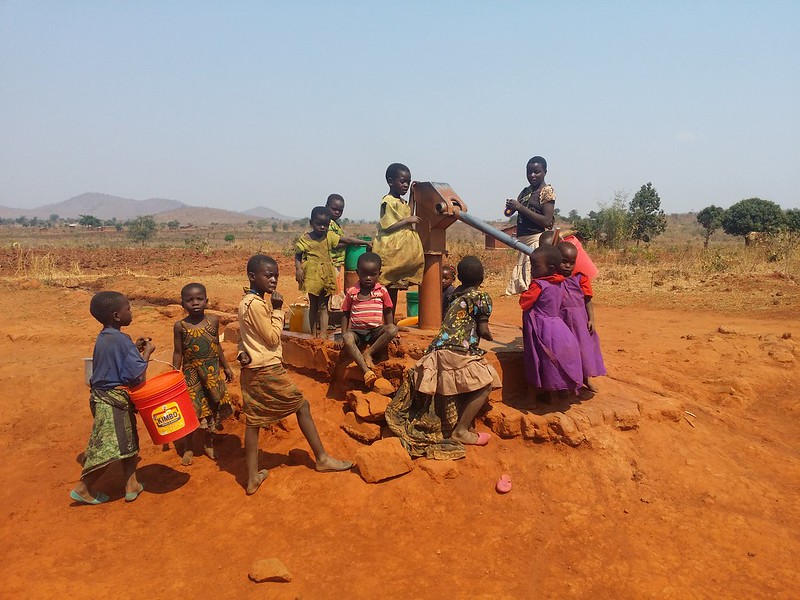By: Jacquelin Sauer
Image courtesy of Widad Sirkhotte; CC-BY-SA.
Noma is a highly infectious, non-contagious bacterial disease that affects 140,000 children each year, yet not many people know about its existence.1,2 Also referred to as “the face of poverty,” noma impacts malnourished children with compromised immune systems, many of whom living in underdeveloped tropical countries, such as Africa, Southeast Asia, and Latin America.2,3,4 Malnourished children under the age of seven with poor oral hygiene and diseases, such as measles or malaria, are especially susceptible to the disease.1 While the complete pathophysiology and virology of noma are unknown, the Fusobacterium necrophorum and Prevotella intermedia bacterial species are most commonly associated with noma.3
Noma is a progressive disease that requires rapid treatment within the first few days of infection, otherwise it becomes life threatening.5 Noma begins as a soft tissue lesion or ulcer in the gums that develops into necrotizing gingivitis and rapidly progresses to a gangrenous stage, where the tissues and bones of the mouth, nose, and lips are destroyed.1,2,5 Approximately 90% of individuals affected by noma die within the first two weeks if they do not receive antibiotic treatment early in the infection.1,4 Survivors of noma are left with severe facial disfigurements that can make make it difficult to eat, speak, see, and breathe.1 In addition to physical complications, survivors of noma experience a decrease in social health and wellbeing due to discrimination and social stigma associated with facial disfigurement.1 Some survivors undergo extensive reconstructive surgery to improve their quality of life if they have access to appropriate health care.1,4
Noma is a preventable disease. Improving nutrition, oral hygiene, general sanitation, and access to adequate health care and childhood vaccines can effectively prevent noma infections.1 A global lack of knowledge, research, and awareness surrounding the disease allow it to silently infect and kill hundreds of thousands of children annually.6,7,8 There is limited epidemiological information regarding case counts, infection rate, and mortality rate of noma. The mortality rate (90%) and annual estimated case count (140,000 children per year) of noma was last updated by the World Health Organization (WHO) in 1998.5 A 2017 study estimates that the current global incidence rate of noma has decreased to 30,000-40,000 cases per year, yet these numbers may have drastically changed since.9
Medical organizations and national governments have been campaigning for years to have noma added to the WHO’s list of neglected tropical diseases (NTDs), yet they have been unsuccessful.8 NTDs are preventable and are a group of viral, bacterial, fungal, and non-communicable diseases that disproportionately affect individuals living in poor and tropical regions.10 The Centers for Disease Control and Prevention (CDC) and WHO aim to bring attention to, control, eliminate, and eradicate NTDs in impoverished communities.11,12 WHO currently recognizes 21 diseases as NTDs.10,11 If noma were added to the NTD portfolio, it would bring the proper attention and awareness to the disease, which could help save hundreds of thousands of lives.
On May 6, 2022, WHO held the first ever stakeholders meeting on noma, during which stakeholders were asked to include noma in the planned WHO 2023 review process.13 If accepted into the review process, noma will be added as a new disease to the WHO’s 2021-2030 roadmap for neglected tropical diseases.13 On May 28, 2022, WHO Member States agreed to adopt a global plan for oral health, which aimed to support the inclusion of noma in the WHO’s review of additional NTDs.14 In January 2023, the Nigerian Health Ministry and 30 other WHO member states asked to formally recognize noma as an NTD, but there has not been an update yet.8 The WHO’s Strategic and Technical Advisory Group for NTDs is supposed to make a final decision on whether to add noma to the NTD portfolio by 2023; however, there is no set date for the meeting.8
Noma is a severe tropical disease that deserves the proper recognition, research, and support from the WHO. Adding noma to the NTD portfolio and WHO roadmap 2021-2030 is a critical first step in saving the lives of hundreds of thousands of children infected each year. Readers can learn more about noma, view survivors’ stories, and help make a change by visiting https://thenomaproject.org/ and https://noma.msf.org/.
Sources
- https://noma.msf.org/
- https://www.who.int/news-room/fact-sheets/detail/oral-health
- https://www.news-medical.net/health/What-is-Noma-(Cancrum-Oris).aspx
- https://www.forbes.com/sites/judystone/2023/03/14/the-deadly-disease-you-never-heard-about—and-how-you-can-help/?sh=102ccb694e88
- https://www.afro.who.int/sites/default/files/2017-07/Information_brochure_EN.pdf
- https://www.theguardian.com/global-development/2021/nov/04/noma-the-hidden-childhood-disease-known-as-the-face-of-poverty
- https://www.doctorswithoutborders.org/latest/calling-global-attention-noma-most-neglected-neglected-diseases
- https://healthpolicy-watch.news/who-to-decide-on-including-noma-as-a-neglected-tropical-disease-in-2023/
- https://www.ncbi.nlm.nih.gov/pmc/articles/PMC5303022/
- https://www.who.int/news-room/questions-and-answers/item/neglected-tropical-diseases
- https://www.who.int/teams/control-of-neglected-tropical-diseases
- https://www.verywellhealth.com/what-are-neglected-tropical-diseases-4171839
- https://www.who.int/news-room/events/detail/2022/05/06/default-calendar/stakeholders-meeting-on-noma


